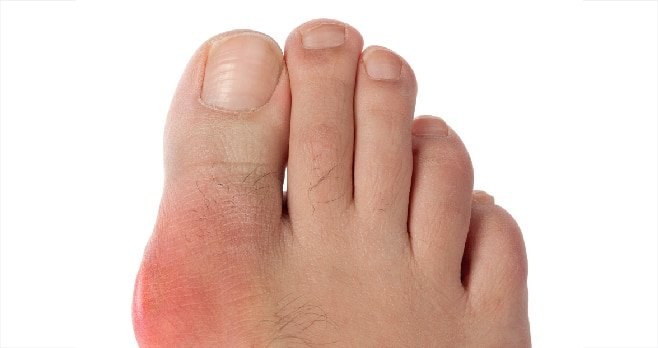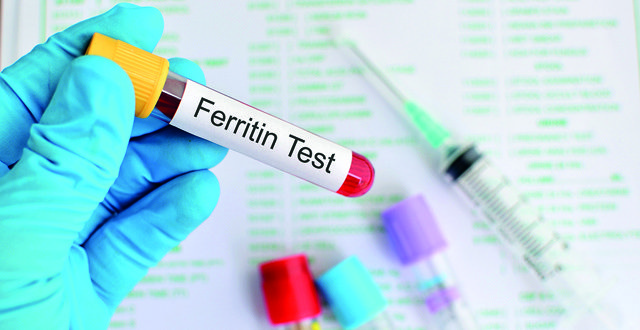Acromegaly is a hormonal disorder that develops when the pituitary gland produces too much growth hormone during adulthood. When this happens, the bones increase in size, including those of the hands, feet and face. Acromegaly usually affects middle-aged adults.
In children who are still growing, too much growth hormone can cause a condition called gigantism. These children have exaggerated bone growth and an abnormal increase in height.
Acromegaly is uncommon and physical changes occur gradually.
Indeed the condition often is not recognised immediately, sometimes not for years.
However, if not treated promptly, acromegaly can lead to serious illness and even become life-threatening. Available treatments for acromegaly can reduce the risk of complications and significantly improve the symptoms, including the enlargement of body features.
<div style=”background: #e8edf0; padding: 10px 15px; margin-bottom: 15px;”> <h3 class=”bodytextMIstyles”>Case Study</h3>
A 46-year-old male presented at clinic with excessive sweating, snoring, enlarged hands, hypertension and non-insulin dependent diabetes mellitus (NIDDM). He also had problems with reduced libido.
An ECHO revealed mild left ventricular hypertrophy (LVH).
Sleep apnoea was also confirmed.
He was obese with a BMI of 32 and also had hyperlipidaemia. GH and IGF-I measurement. After fasting overnight, a blood sample was taken to measure his levels of GH and IGF-I. Elevated levels of these hormones suggest acromegaly.
The patient had a GH suppression test. This is the definitive method for verifying acromegaly. Blood levels of GH are measured before and after the patient drinks a preparation of glucose.
Normally, glucose ingestion depresses levels of GH.
GH level remained high in this patient, a sign of acromegaly.
Imaging: MRI confirmed the presence of a large pituitary tumour.
His test results were as follows:
<p class=”listBULLETLISTTEXTMIstyles”>Total cholesterol: 4.2
<p class=”listBULLETLISTTEXTMIstyles”>HDL: 0.9
<p class=”listBULLETLISTTEXTMIstyles”>LDL: 2.7
<p class=”listBULLETLISTTEXTMIstyles”>Triglyceride: 1.5
<p class=”listBULLETLISTTEXTMIstyles”>IGF-I: *46.2
After consulting with the neurosurgeon it was decided that surgery would be the best treatment option for this patient due to the size of the tumour and the significantly elevated IGF-I levels.
He proceeded to have endoscopic transnasal transsphenoidal surgery.
While there was a significant reduction in his IGF-I levels they still remained high so he was put on lanreotide.
In other cases where the tumour was much smaller we would consider only medical treatment, but in this case surgery was the best option followed by medical treatment.
</div>
<h3 class=”subheadMIstyles”>Symptoms</h3>
One of the most common signs of acromegaly is enlarged hands and feet. People with this disorder often notice that they can no longer put on rings that used to fit and that their shoe size has progressively increased. Acromegaly can cause patients to experience gradual changes in the shape of their face, such as a protruding lower jaw and brow, an enlarged nose, thickened lips, and wider spacing between the teeth.
Because acromegaly tends to progress slowly, early signs may not be readily apparent for several years.
Acromegaly may produce the following signs and symptoms:
<p class=”listBULLETLISTTEXTMIstyles”>Fatigue and muscle weakness;
<p class=”listBULLETLISTTEXTMIstyles”>A deepened, husky voice due to enlarged vocal cords and sinuses;
<p class=”listBULLETLISTTEXTMIstyles”>Severe snoring due to obstruction of the upper airway;
<p class=”listBULLETLISTTEXTMIstyles”>Impaired vision;
<p class=”listBULLETLISTTEXTMIstyles”>Enlarged hands and feet;
<p class=”listBULLETLISTTEXTMIstyles”>Coarsened, enlarged facial features;
<p class=”listBULLETLISTTEXTMIstyles”>Coarse, oily, thickened skin;
<p class=”listBULLETLISTTEXTMIstyles”>Excessive sweating and body odour;
<p class=”listBULLETLISTTEXTMIstyles”>Small outgrowths of skin tissue (skin tags);
<p class=”listBULLETLISTTEXTMIstyles”>Headaches;
<p class=”listBULLETLISTTEXTMIstyles”>Enlarged tongue;
<p class=”listBULLETLISTTEXTMIstyles”>Pain and limited joint mobility;
<p class=”listBULLETLISTTEXTMIstyles”>Menstrual cycle irregularities in women;
<p class=”listBULLETLISTTEXTMIstyles”>Erectile dysfunction in men;
<p class=”listBULLETLISTTEXTMIstyles”>Enlarged liver, heart, kidneys, spleen and other organs;
<p class=”listBULLETLISTTEXTMIstyles”>Increased chest size (barrel chest).
Acromegaly is caused by the pituitary gland overproducing growth hormone (GH) over time. The pituitary, a small gland situated at the base of the brain behind the bridge of the nose, produces a number of hormones. GH plays an important role in managing physical growth.
When GH is secreted into the bloodstream, it triggers the liver to produce a hormone called insulin-like growth factor-I (IGF-I). In turn, IGF-I stimulates the growth of bones and other tissues. If the pituitary gland makes too much GH, excessive amounts of IGF-I can result. Too much IGF-I can cause abnormal growth of the soft tissues and skeleton and other signs and symptoms characteristic of acromegaly and gigantism.
In adults, a tumour is the most common cause of too much GH production:
<p class=”listBULLETLISTTEXTMIstyles”><strong>Pituitary tumours.</strong> Most cases of acromegaly are caused by a non-cancerous (benign) tumour (adenoma) of the pituitary gland. The tumour secretes excessive amounts of GH, causing many of the signs and symptoms of acromegaly. Some of the symptoms of acromegaly, such as headaches and impaired vision, are due to the tumour mass pressing on nearby brain tissues.
<p class=”listBULLETLISTTEXTMIstyles”><strong>Non-pituitary tumours.</strong> In a small number of people with acromegaly, tumours in other parts of the body, such as the lungs, pancreas or adrenal glands, cause the disorder. Sometimes, these tumours actually secrete GH. In other cases, the tumours produce a hormone called growth hormone-releasing hormone (GH-RH), which stimulates the pituitary gland to make more GH.
<h3 class=”subheadMIstyles”>Complications</h3>
Progression of acromegaly can result in major health problems. Complications may include:
<p class=”listBULLETLISTTEXTMIstyles”>Precancerous growths (polyps) on the lining of the colon;
<p class=”listBULLETLISTTEXTMIstyles”>Carpal tunnel syndrome;
<p class=”listBULLETLISTTEXTMIstyles”>Reduced secretion of other pituitary hormones (hypopituitarism);
<p class=”listBULLETLISTTEXTMIstyles”>Uterine fibroids, benign tumours in the uterus;
<p class=”listBULLETLISTTEXTMIstyles”>Spinal cord compression;
<p class=”listBULLETLISTTEXTMIstyles”>Vision loss;
<p class=”listBULLETLISTTEXTMIstyles”>Cardiovascular disease, particularly enlargement of the heart (cardiomyopathy);
<p class=”listBULLETLISTTEXTMIstyles”>Osteoarthritis;
<p class=”listBULLETLISTTEXTMIstyles”>Diabetes mellitus;
<p class=”listBULLETLISTTEXTMIstyles”>Hypertension;
<p class=”listBULLETLISTTEXTMIstyles”>Goitre;
<p class=”listBULLETLISTTEXTMIstyles”>Sleep apnoea, a condition in which breathing repeatedly stops and starts during sleep.
Early treatment of acromegaly can prevent these complications from developing or becoming worse.
If untreated, acromegaly and its complications can lead to premature death.
<h3 class=”subheadMIstyles”>Diagnosis</h3> <p class=”listBULLETLISTTEXTMIstyles”><strong>GH and IGF-I measurement. </strong>After the patient has fasted overnight, a blood sample is taken to measure their levels of GH and IGF-I. Elevated levels of these hormones suggest acromegaly.
<p class=”listBULLETLISTTEXTMIstyles”><strong>Growth hormone suppression test. </strong>This is the definitive method for verifying acromegaly. In this test, the blood levels of GH are measured before and after the patient drinks a preparation of sugar (glucose). Normally, glucose ingestion depresses levels of GH. If a patient has acromegaly, their GH level will tend to stay high.
<p class=”listBULLETLISTTEXTMIstyles”><strong>Imaging. </strong>MRI can help pinpoint the location and size of a tumour of the pituitary gland.
<h3 class=”subheadMIstyles”>Surgery</h3>
In transnasal transsphenoidal endoscopic surgery, a surgical instrument is placed through the nostril and alongside the nasal septum to access a pituitary tumour.
Removing the tumour can normalise GH production and eliminate the pressure on the tissues surrounding the pituitary gland to relieve associated signs and symptoms. In some cases, the surgeon may not be able to remove the entire tumour. This may result in persistently elevated GH levels after surgery, requiring further medical or radiation treatments.
<h3 class=”subheadMIstyles”>Medical treatment</h3>
Drugs used to lower the production
or block the action of GH include:
<p class=”listBULLETLISTTEXTMIstyles”><strong>Somatostatin analogues.</strong> The drugs octreotide and lanreotide are synthetic versions of the brain hormone somatostatin. They can interfere with the excessive secretion of GH by the pituitary gland and thus can produce rapid declines in GH levels. When starting octreotide treatment, the patient initially injects themselves with a short-acting preparation under their skin (subcutaneously) three times a day to determine if they have any side effects from the medication and if it is effective. Then, if it is tolerated and effective, they can take a long-acting form that requires an injection into the muscles of their buttocks (gluteal muscles) by a healthcare professional, administered once a month. Lanreotide is administered as a subcutaneous injection once a month.
<p class=”listBULLETLISTTEXTMIstyles”><strong>Dopamine agonists. </strong>The medications cabergoline and bromocriptine are taken orally in tablet form. In some people, these drugs can lower levels of GH and IGF-I. The tumour may decrease in size in some people taking a dopamine agonist or somatostatin analogues. Some people may develop compulsive behaviours, such as gambling, while taking these medications.
<p class=”listBULLETLISTTEXTMIstyles”><strong>GH antagonist. </strong>The medication pegvisomant, a GH antagonist, acts to block the effect of GH on body tissues. Pegvisomant may be particularly helpful for people who have not had good success with other forms of treatment. The patient administers this medication themselves daily by subcutaneous injection. This medication can normalise IGF-I levels and relieve symptoms in most people with acromegaly, but does not lower GH levels or reduce the tumour size.
<h3 class=”subheadMIstyles”>Radiation</h3>
Radiation therapy destroys any lingering tumour cells and slowly reduces GH levels. It may take years for this treatment to noticeably improve acromegaly symptoms.
<p class=”listBULLETLISTTEXTMIstyles”><strong><em>Conventional radiation therapy</em></strong><strong>: </strong>This type of radiation therapy is usually given every weekday over a period of four-to-six weeks. The patient may not realise the full effect of conventional radiation therapy for 10 or more years after treatment.
<p class=”listBULLETLISTTEXTMIstyles”><strong><em>Proton beam therapy</em></strong><strong>:</strong> Proton beam therapy delivers a targeted, high dose of radiation to the tumour, sparing radiation exposure to normal tissues. Proton beam therapy is provided in fractions over time, but treatment times are generally less than conventional radiation.
<p class=”listBULLETLISTTEXTMIstyles”><strong><em>Stereotactic radiosurgery</em></strong><strong>: </strong>Also known as Gamma Knife radiosurgery, stereotactic radiosurgery can deliver a high dose of radiation to the tumour cells in a single dose, while limiting the amount of radiation to the normal surrounding tissues. This type of radiation may bring GH levels back to normal within three-to-five years.
<h3 class=”subheadMIstyles”>Summary</h3>
In summary, acromegaly is rare, but must be considered in cases where patients complain of excessive sweating, musculoskeletal changes such as large hands and feet, obesity and reduced libido and infertility. They may also present with sleep apnoea and peripheral paraesthesia and visual disturbances
It is a very treatable condition so physicians must be alert to it as a possible diagnosis.









Leave a Reply
You must be logged in to post a comment.